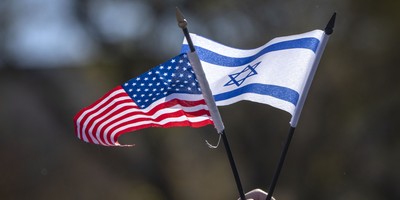Late last week, new guidelines and policies about when Border Patrol Agents can use lethal force were released by the U.S. Customs and Border Protection office in Washington D.C. In a directive issued by U.S. Border Patrol Chief Michael Fisher, with the subject line "use of safe tactics and techniques," agents have been ordered not to shoot at fleeing vehicles and have been urged not to put themselves in situations that require deadly force to survive.
In the directive, Fisher acknowledges that since 2010, Border Patrol Agents have been assaulted by illegal immigrants and criminal aliens with rocks 1,713 times since 2010. Deadly force was used only 43 times, resulting in the death of 10 illegals engaging violently with agents. In response, the Mexican government and open border groups have demanded Border Patrol reassess their use of deadly force, arguing rock throwing, a potentially deadly tactic used to distract agents during drug smuggling runs, should not be met with lethal force. What is most alarming is Fisher's urging of supervisors and agents to use less than deadly methods to combat assault, setting up agents on the ground for failure as they try to comply with a bureaucratic process during fast moving and dangerous situations. [Emphasis below is mine]
In order to lessen the likelihood of deadly force situations and reduce the risk of injury or death to agents and others, I am implementing the following directive effective immediately, which clarifies existing guidelines contained in the CBP Use of Force Policy:
(1) In accordance with CBP's current Use of Force policy, agents shall not discharge their firearms at a moving vehicle unless the agent has a reasonable belief, based on the totality of the circumstances that deadly force is being used against an agent or another person present; such deadly force may include a moving vehicle aimed at agents or others present, but would not include a moving vehicle merely fleeing from agents. Further, agents should not place themselves in the path of a moving vehicle or use their body to block a vehicle's path.
Recommended
(2) Agents should continue, whenever possible, to avoid placing themselves in positions where they have no alternative to using deadly force. Agents shall not discharges firearms in response to thrown or hurled projectiles unless the agent has a reasonable belief, based on the totality of the circumstances, to include the size and nature of the projectiles, that the subject of such force poses an imminent danger of death or serious injury. Agents should obtain a tactical advantage in these situations, such as seeking cover or distancing themselves from the immediate area of danger.
Supervisors are instructed to address this directive at musters, to include using alternative methodologies, such as setting up controlled tire deflation devices, acquiring additional back-up, utilizing technology and less-than-lethal equipment, taking appropriate cover, and recognizing when to engage or subsequently disengage.
When Border Patrol Agent Brian Terry was killed on December 15, 2010 in Arizona's Peck Canyon, it was revealed that his highly specialized and trained BORTAC team came under AK-47 fire from illegal drug smugglers from Mexico after agents fired bean bag warning shots. They fired bean bag shots in order to comply with Homeland Security policy and received live ammunition fire in return. Those bean bag shots, or what Fisher would call "utilizing technology and less-than-lethal equipment," got Terry killed and will only set up agents in the future for the same fate.
"I cannot stress enough how important it is to physically and mentally prepare yourselves, so that when dangerous situations arise, you increase your chances of survivability while limiting unnecessary risk to others. It is anticipated that these initial steps will help reduce the likelihood of assault against our agents," Fisher wrote.
These new guideline "clarifications" won't result in a reduction in assaults against agents, but instead will do the opposite by increasing them.
The National Border Patrol Council, an organization representing 17,000 Border Patrol agents is pushing back against new regulations and overbearing policies that put agents in further danger.
Restricting agents in their use of force, whether it is against rock or vehicular assaults, will only result in more criminals attacking Border Patrol agents. Criminals will know if agents are prohibited from using deadly force against rock or vehicle assaults, they will quickly employ those means against agents. This is evidenced by the Border Patrol’s previous pursuit policy that was overly restrictive. The vast majority of smugglers would fail to yield and evade agents, since they were well aware of the policy’s restrictions and that there were little to no consequences for fleeing.
The Border Patrol, due to its strategy of putting pressure on smugglers and illegal aliens at the border fence, has contributed to the situation where criminals are emboldened to launch rock assaults from Mexico or just inside the U.S. Tactically this leaves agents little recourse as they are often caught unprotected in the open or between fences when assaults occur. Assaults would decrease if agents were allowed to make arrests away from the border fence, in areas of their choosing that are more tactically sound and with other agents for back-up.
No Border Patrol agent goes to the field wanting to be involved in a deadly force situation. Agents are trained to protect themselves and be aware of their surroundings. No agent would intentionally put himself in front of a speeding vehicle or within range of rock throwing criminals so that they could use deadly force. Assertions to the contrary belittle the training, integrity, and professionalism of Border Patrol agents. These assaults happen for one reason only: criminals make a conscious decision to attack Border Patrol agents. Stop the assaults on agents and the use of deadly force would be unnecessary.
























Join the conversation as a VIP Member